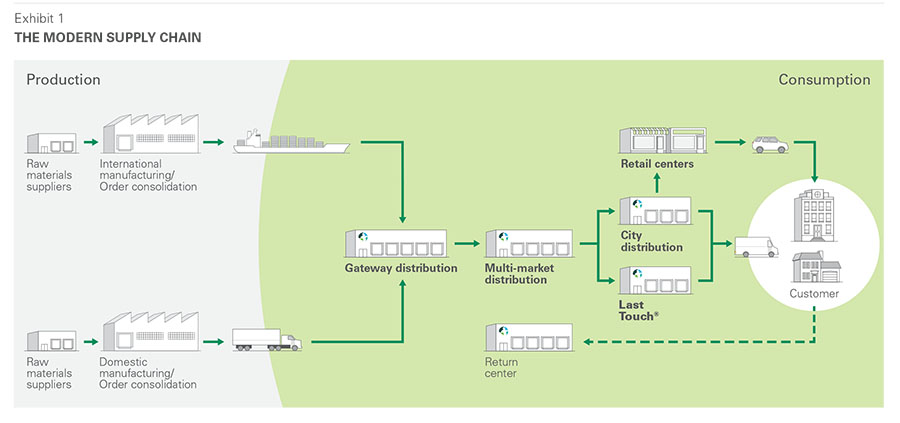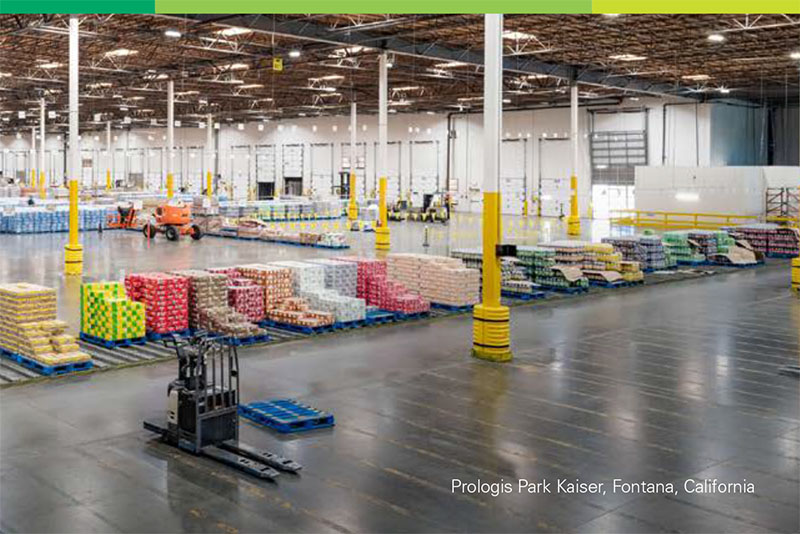The term “last mile” has become overused and ineffective in describing industrial real estate, maintains the San Francisco-based consultancy, Prologis.
In its recent research paper, analysts posit that when the supply chain extends from the factory to the doorstep, the way we talk about warehouses must change.
To that end, real estate leader Prologis has develop d a first-of-its-kind methodology to redefine industrial properties based on the modern supply chain. It is outlined in great detail in its paper, “Supply Chain: A New Model For Defining Logistics Real Estate.”
Considering a building's location versus its functionality, Prologis has determined that only 10% of the current logistics real estate market can be categorized as “last touch.”
In comparison, 45% of the buildings available today are multi-market; these are newer facilities located at key transportation hubs at the periphery of major urban areas. Prologis' analysis centered around questions of delivery times, income/consumption, and building design features.
In an interview with Melinda McLaughlin, Prologis' vice president of research, we learned more about the framework she developed, and how it corresponds to supply chains, and what's next for the sector.
“We developed a data-driven methodology to more accurately describe logistics real estate properties according to their position along today's evolving supply chain,” she says.

According to McLaughlin, researchers focused on three factors: the time it takes for goods to travel between a facility and its end destination; where goods are consumed; and the operational efficiency of each segment of the supply chain.
“We then mapped this against the characteristics of buildings to illustrate the trade-offs companies must consider in weighing location and functionality,” she adds. “In the near term, we hope that this lexicon can elevate our understanding of our industry.”
SC
MR


Latest Supply Chain News
- How S&OP provides the answer to in-demand products
- AI, virtual reality is bringing experiential learning into the modern age
- Humanoid robots’ place in an intralogistics smart robot strategy
- Tips for CIOs to overcome technology talent acquisition troubles
- There is still work to do to achieve supply chain stability
- More News
Latest Podcast

 Explore
Explore
Business Management News
- How S&OP provides the answer to in-demand products
- AI, virtual reality is bringing experiential learning into the modern age
- Tips for CIOs to overcome technology talent acquisition troubles
- There is still work to do to achieve supply chain stability
- Blooming success: The vital role of S&OE in nurturing global supply chains
- Supply chain salaries, job satisfaction on the rise
- More Business Management
Latest Business Management Resources

Subscribe

Supply Chain Management Review delivers the best industry content.

Editors’ Picks





